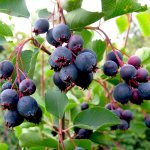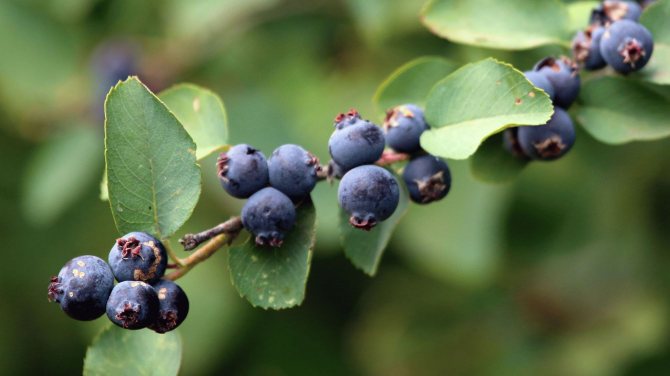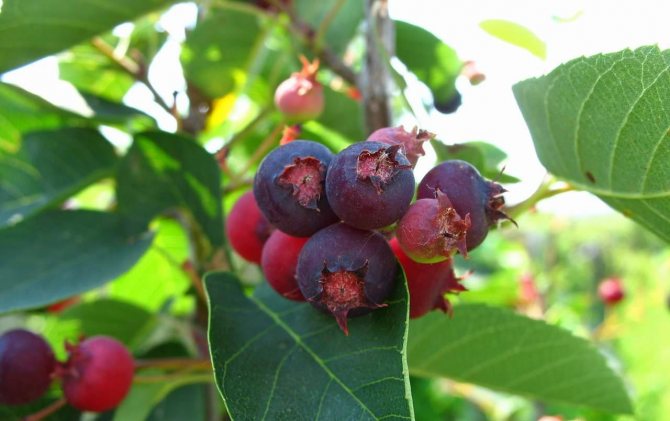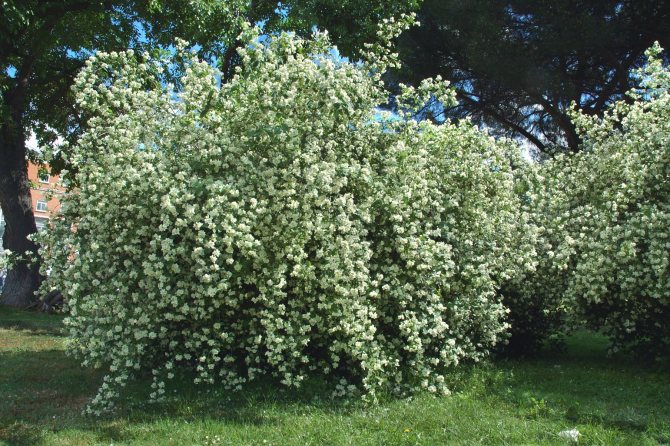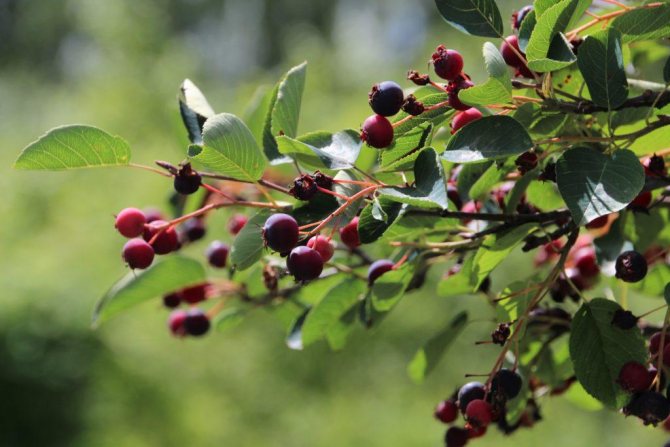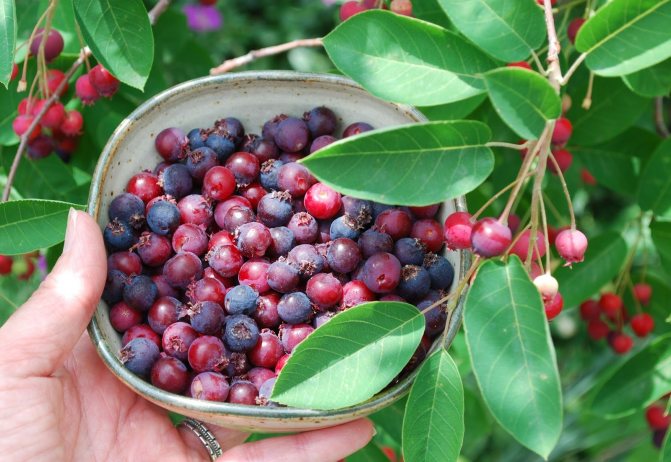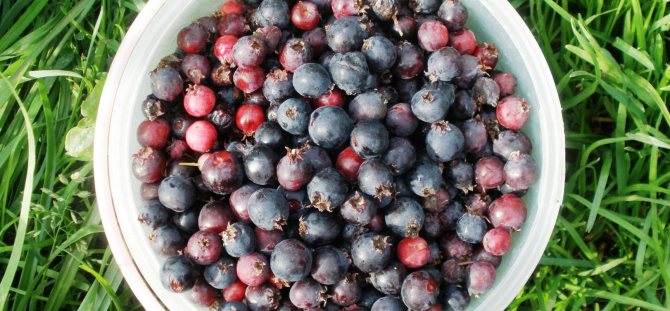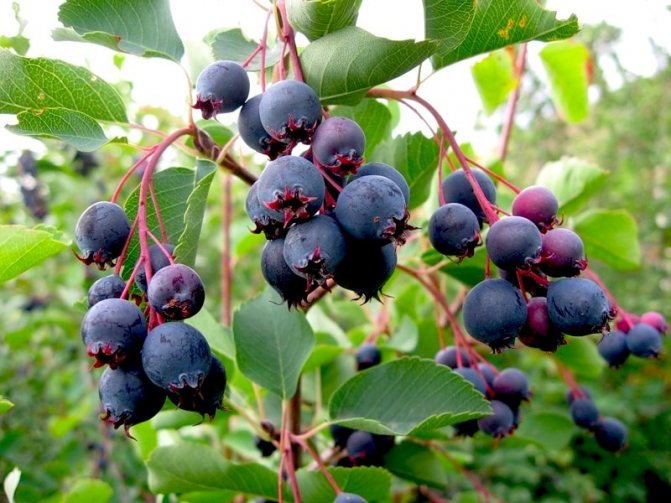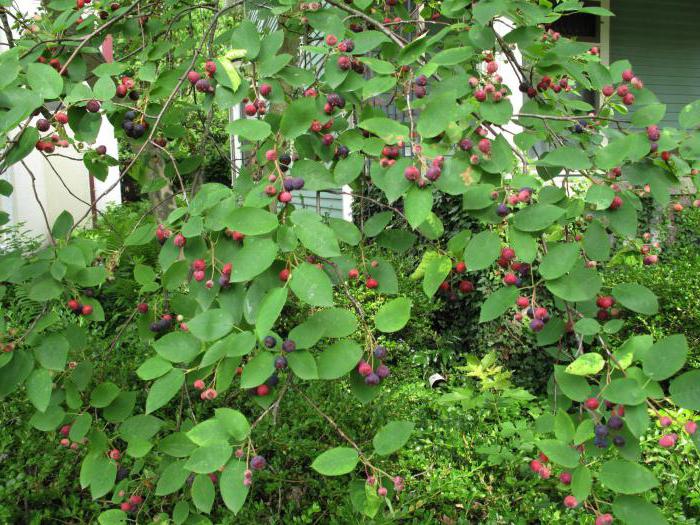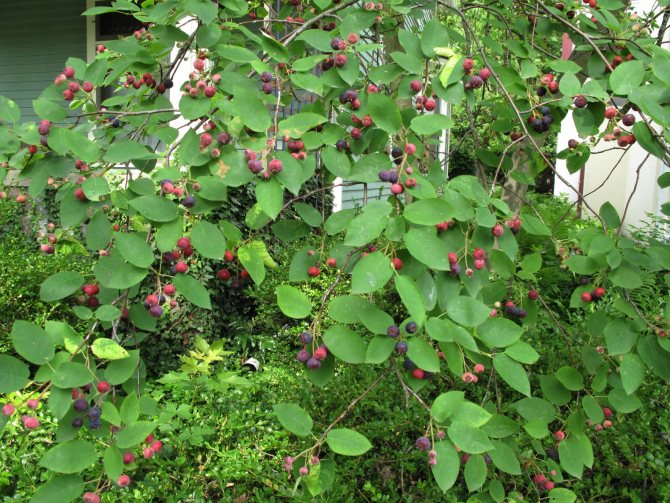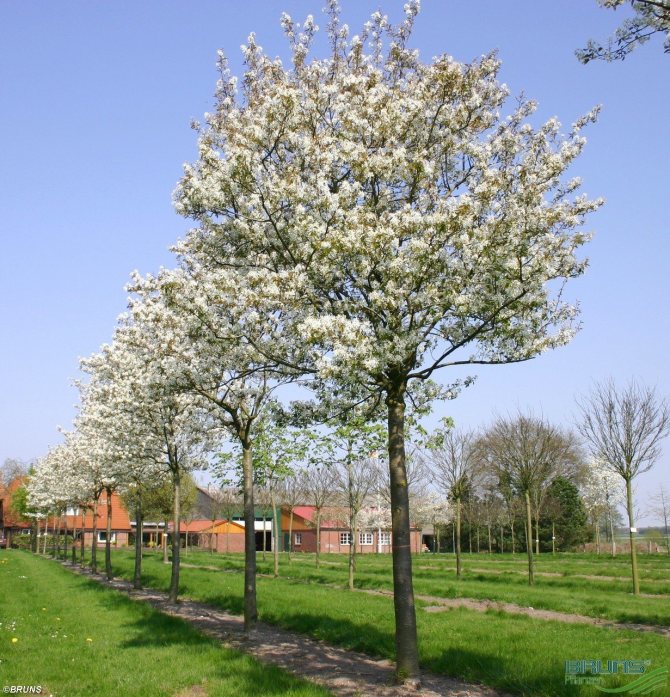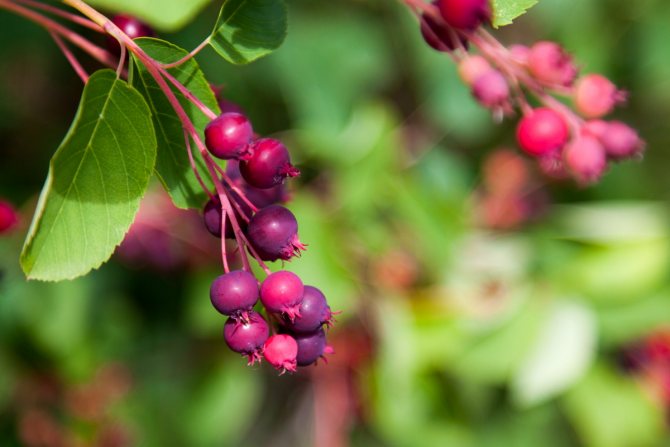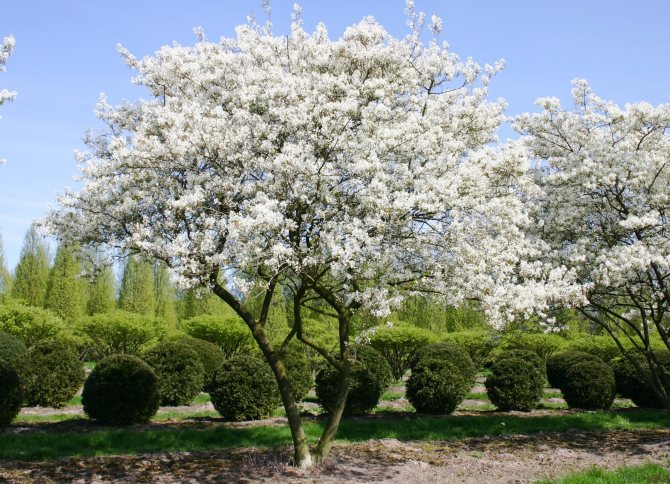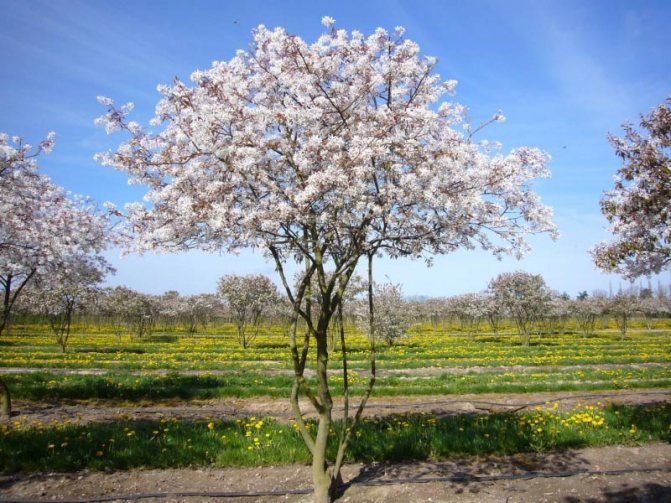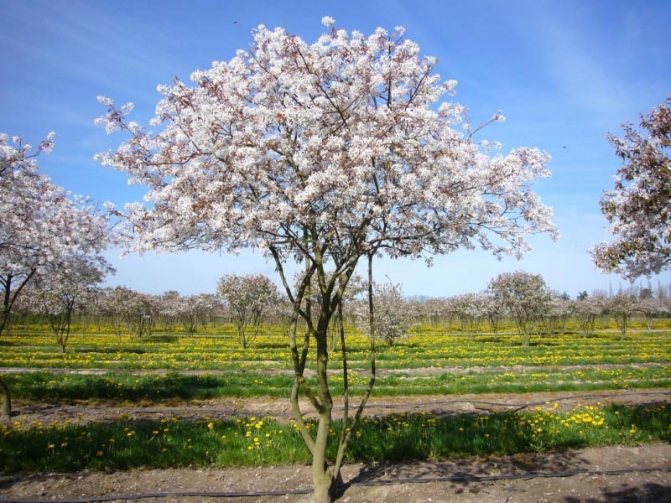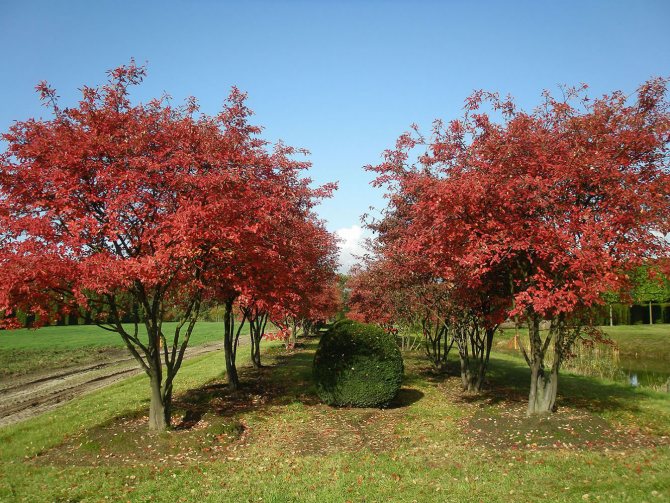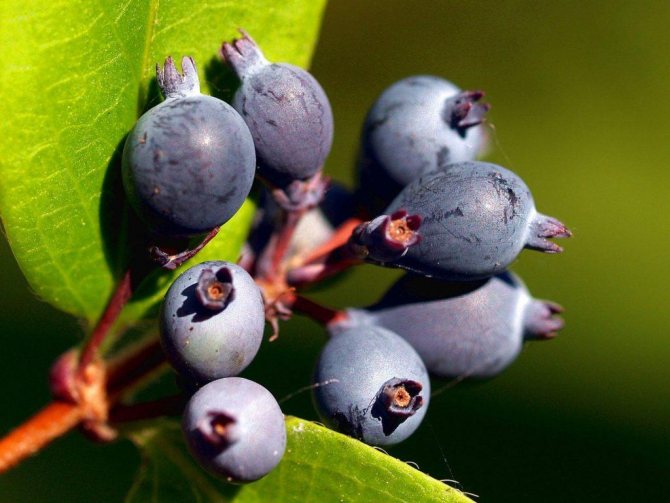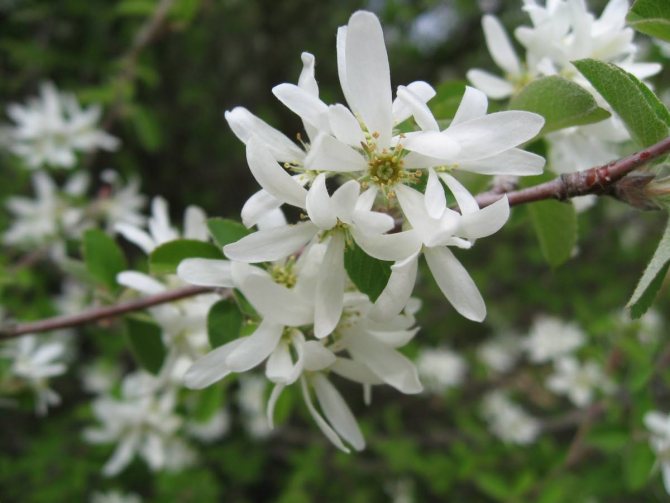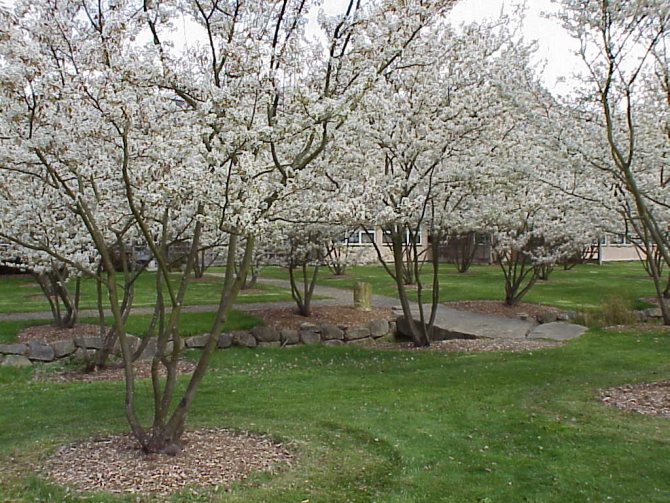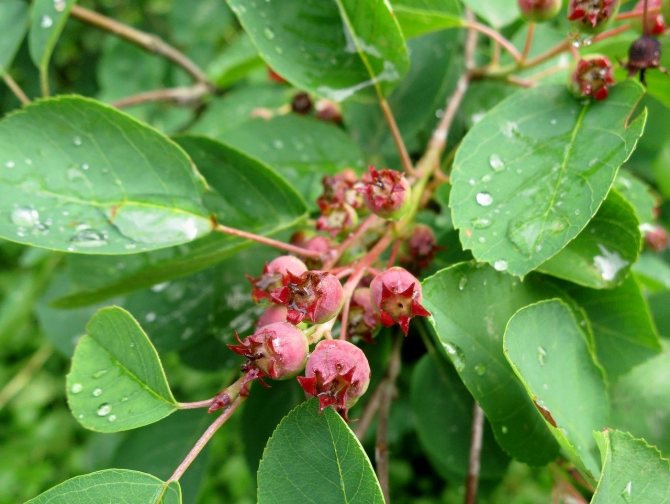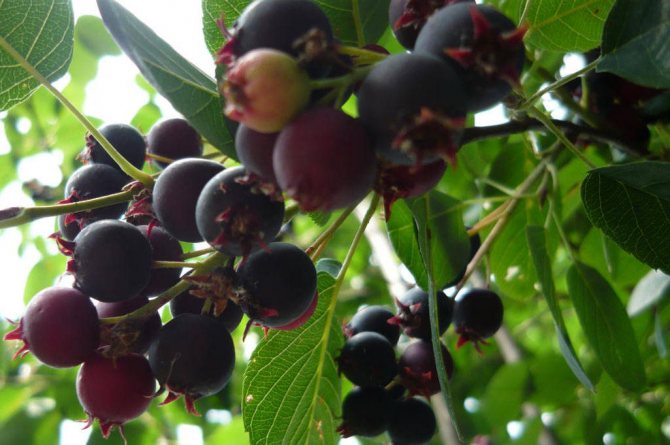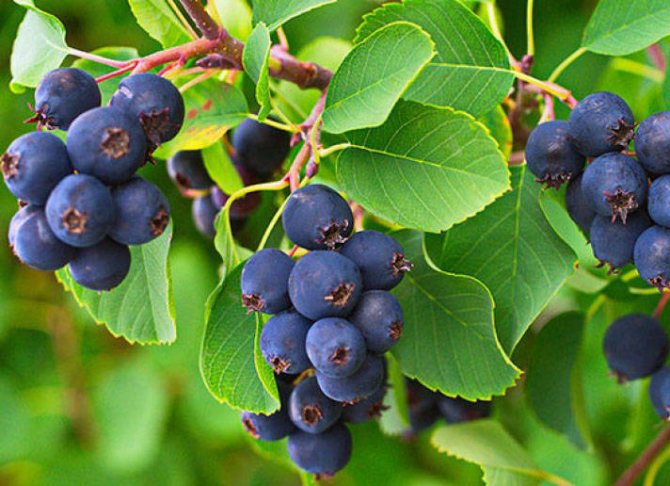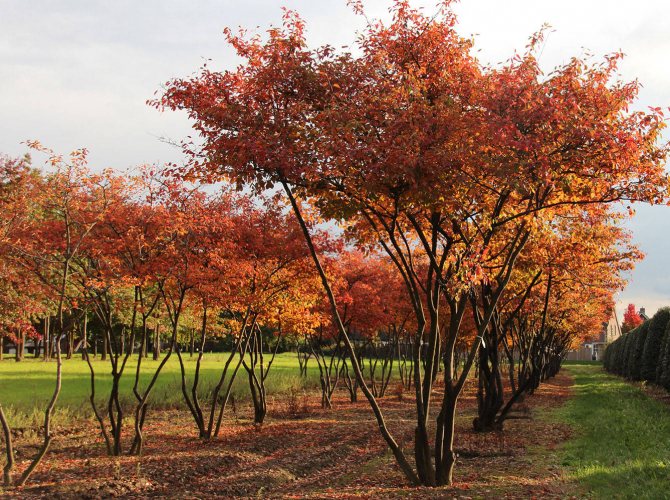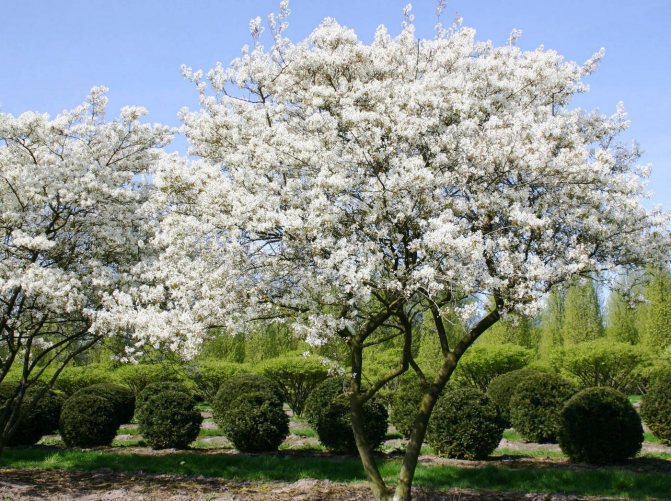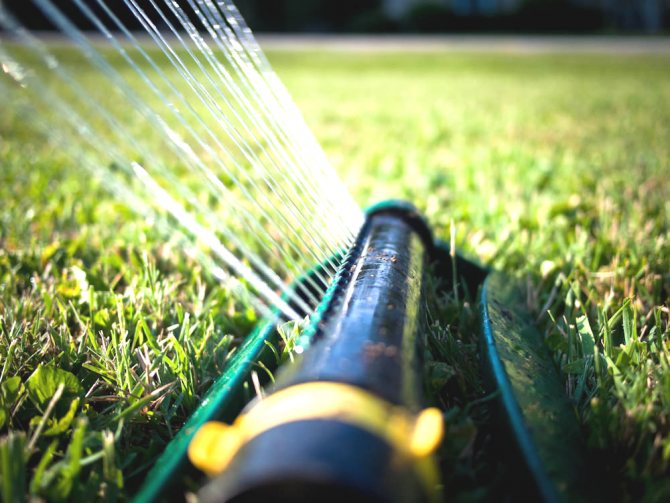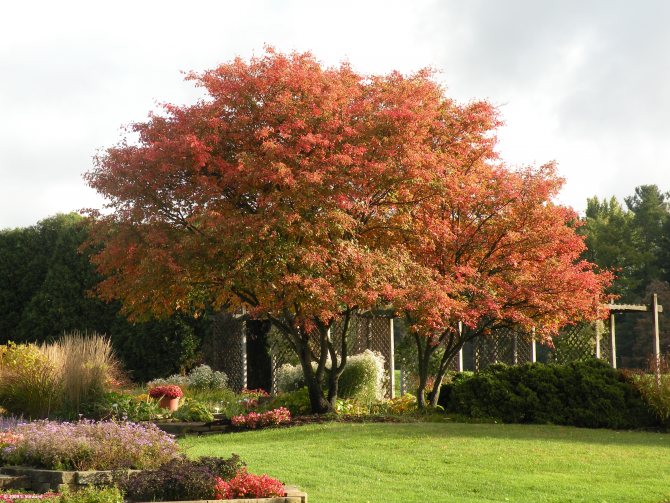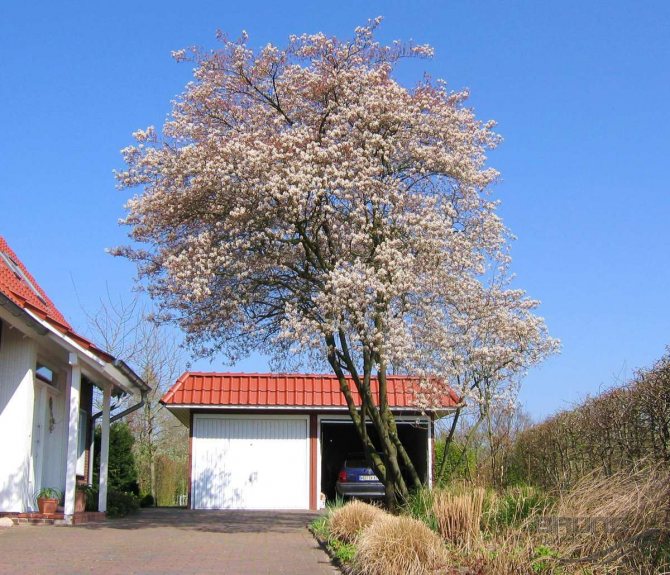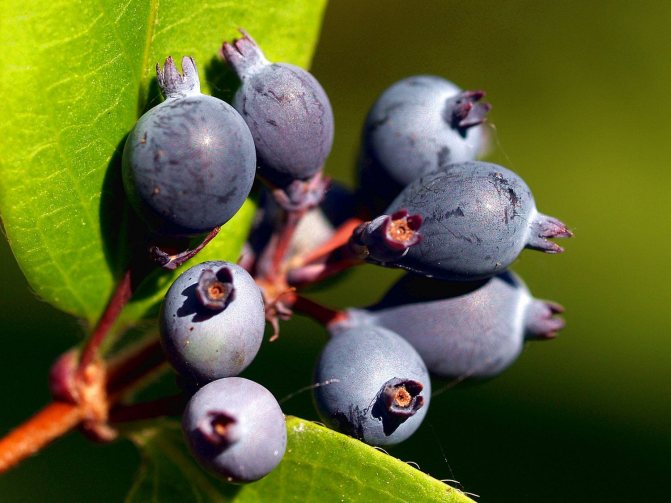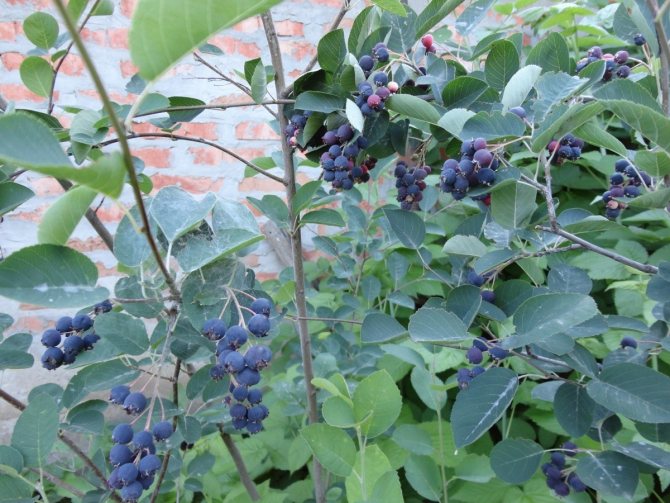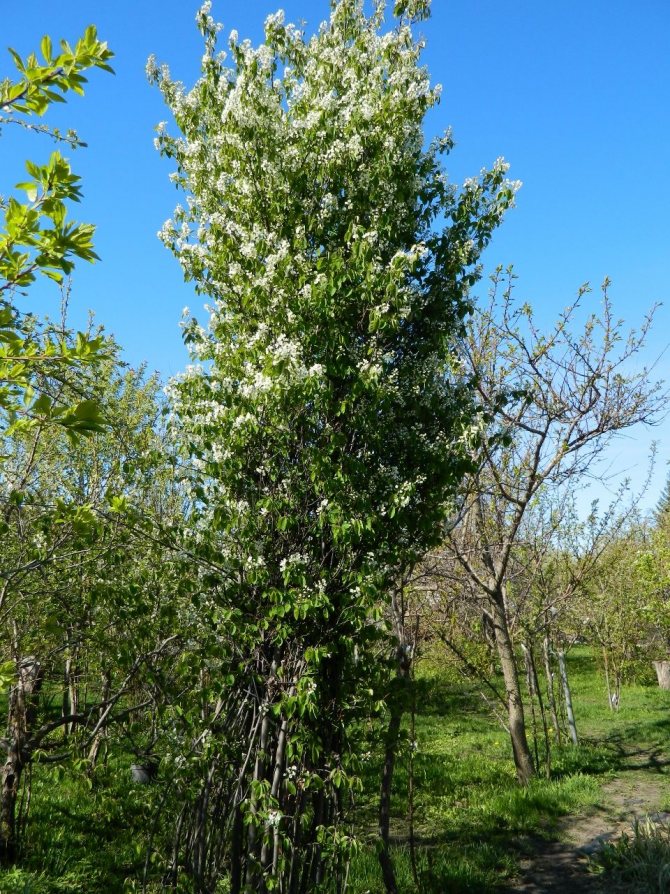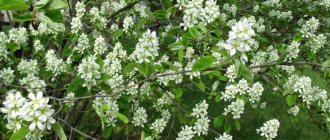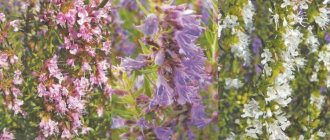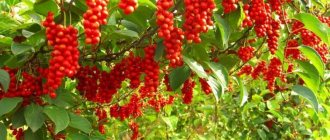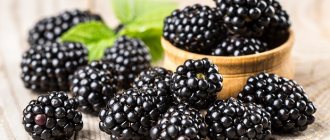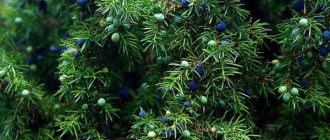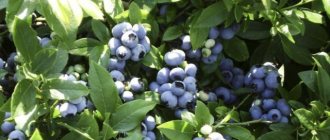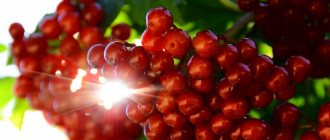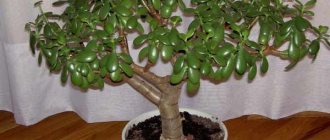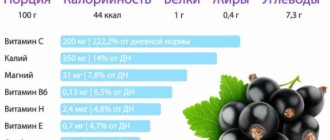Irga is a very tasty and healthy berry
Irga is a fruiting green plantation that has many names. The British gave her the nickname "shade bush", and one of the other names - coryna, currant-tree, and this version is given because of the similarity of the plant's fruit with grapes from the Mediterranean. Russians call irgu a wine berry, and in Provence its literal translation means "bringing honey".
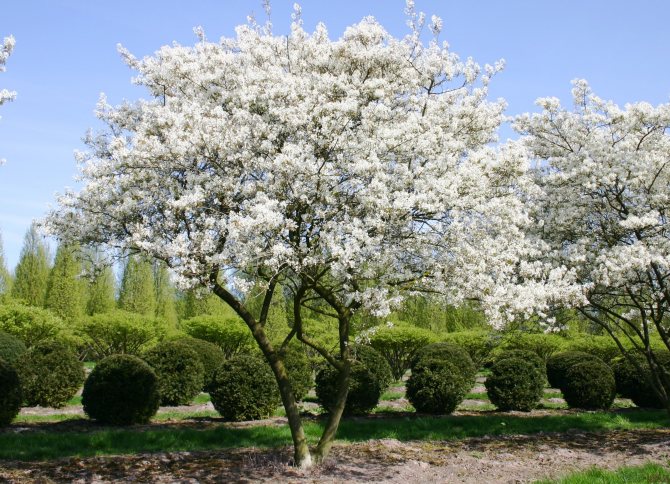
Wine berry tree during flowering
On a note! The genus Irga includes more than 18 species and grows in bulk in North America, but it feels just as wonderful in our territory. The plant loves mountain slopes with an abundance of sun, forest edges and clearings. On the heights, it is able to climb to a height of 1,900 m.
Plant history
Where did this tree come from? They began to grow it in England, and soon in Holland. How this berry got to the territory of Russia is unknown. In the 18th century, they learned about it in North America. There she gained great popularity. Irgi berries were mixed with lemon and rhubarb and served with wild meat. This mixture improved the taste of the dish. Irga was used to make jams and preserves.
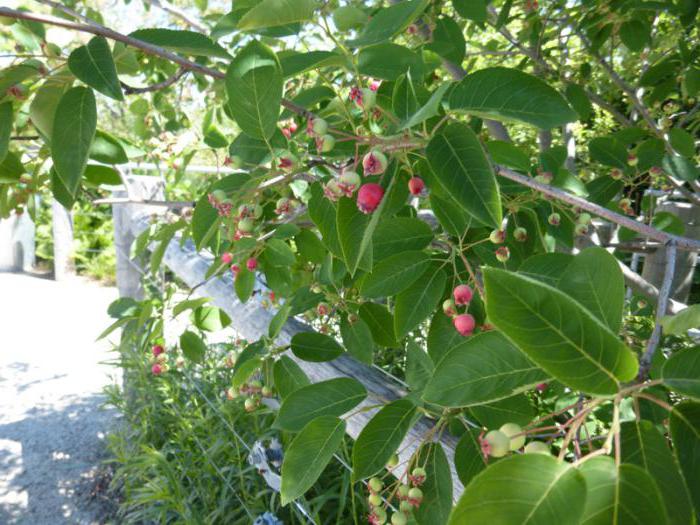

The popularity of the tree has grown so much that in the 19th century it was grown on special plantations. Even today, the irga produces a good harvest in these countries and is used to decorate gardens and lawns. It is grown in Asia Minor and even in North Africa. In Russia, the berry began to be used everywhere in the 19th century. It was sold in the market under the guise of grapes. And only Michurin began to propagate this plant, thereby contributing to its spread.
Cooking use
Irga is eaten not only fresh, but also processed. A variety of drinks are made from fruits in cooking: compote, jelly, juice, as well as tincture, wine, etc. Berries are used to make jams, preserves, and preserves. Very tasty mashed potatoes are prepared from grated yirgi.
Dried fruits are very similar in taste to blueberries, so they can be used similar to these berries.
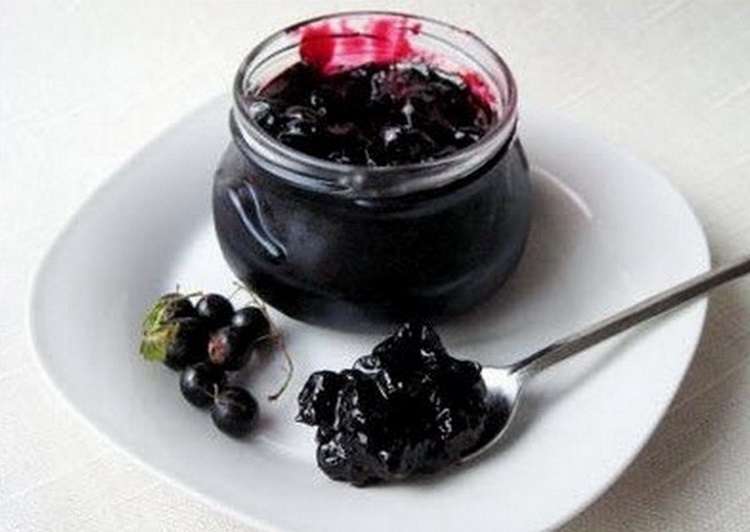

What is Irga
This plant belongs to the Rosaceae family. It can be ranked as both trees and shrubs. Its leaves are round or slightly oval in shape. Their color is dark green at the top, and lighter at the bottom. In the fall, the foliage turns dark red and then falls off. The benefits and harms of irgi are known to many gardeners. But some people breed it as a decoration for a garden plot. This plant has small flowers of light color, which are collected in a brush. They are odorless and located at the ends of the shoots.
Botanical description
Corinka is distinguished by abundant flowering, decorative fruits, exquisite autumn color of the leaves. The plant tolerates drought, cold, shearing well, undemanding to soil. It grows quickly, bears fruit every year.
The leaves are serrated along the edge, simple, round or oval, light green below, rich marsh above, deep burgundy or yellow-red in autumn.
Flowers are collected in thyroid racemes, placed at the end of the shoots. Numerous, white or cream colored. One pestle. Lower ovary. Abundant flowering, fruiting is observed on last year's top shoots.
Fruit with a bluish bloom, shaped like an apple, up to 10 mm in diameter. Has a reddish purple or bluish black color, edible, sweet.Ripening period - July-August.
Irgi fruits
Irga berry, the benefits and harms of which will be described below, is small in size. It can be compared to small apples. The diameter of the fruit is no more than 10 millimeters. There are sepals at the base of the berries. The plant bears fruit every year at the end of summer. But the ripening of berries occurs unevenly for a certain period, so the harvest is harvested in parts.
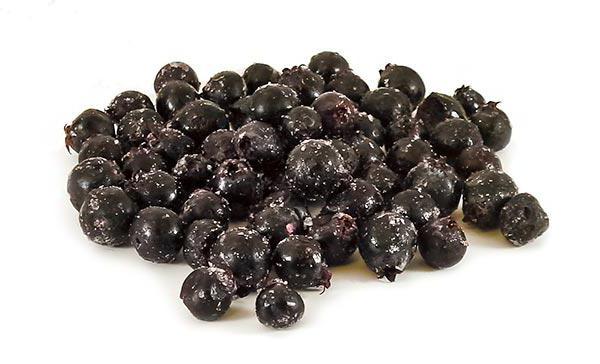

Good lighting is needed to fully ripen the berries. The fruits are dark, purple or blue in color. Like some varieties of plums, there is a bluish bloom on the skin. The pulp of the berries is sweet, aromatic and juicy. Irga, whose health benefits and harms have been studied for a long time, will not only become a decoration of the garden, but will also give a good harvest with proper care.
Growing
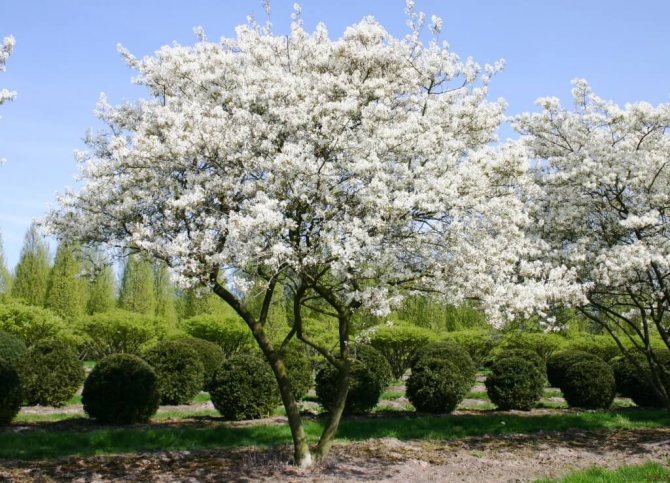

Irga is recommended to be planted in spring or autumn in a bright place for abundant fruiting of the plant. Otherwise, her powers will be spent on stretching shoots in search of light. Irga is not capricious, loves fertile soil (sandy loam or loamy), but it can grow in any soil. Acidity does not matter. It is not recommended to plant a plant in an area where groundwater is high, since its root system goes into the soil by 2.5 m.
Before planting, the site is cleared of weeds, dug up, phosphorus or potash fertilizers are applied (40 g per 1 m2), and kept under black steam. Digging depth - 15 cm.
Irgi seedlings are arranged in a checkerboard pattern, maintaining a distance between the bushes of 0.5-1.5 m. The size of the pit is 60x60x50 cm. Planting of cinnamon is made according to the principle of berry plants: blackberry, blueberry, actinidia, gooseberry, currant, raspberry, honeysuckle.
Remember, the root collar of the irgi seedling should not be buried.
After planting, the bush is poured abundantly with water to shrink the soil (8-10 liters), after which the earth is poured into the hole to level the surface of the site. In order for the plant to take root in the soil, they mulch near the irgi with peat, humus. After planting the bush, 5 developed buds are left on each shoot, the rest of the ground part is cut off.
Irga is easy to care for. To obtain a bountiful harvest, it is enough to regularly weed around it and rarely water it. Apply seasonal top dressing occasionally and prune your shrubbery.


Irga is drought-resistant, watering is required only in the driest season. It is better to do this in the afternoon - after 4 pm, when the heat subsides.
After four to five years of age, every year, fertilizers (2 buckets of humus, 200 g of potassium and 300 g of superphosphate), which do not contain chlorine, are applied to the trunk circle, retreating 25 cm from the root collar. From April to July, it is recommended to feed irga with liquid organic matter - a solution of chicken manure 10% (5 liters under a bush). Apply at night to pre-moistened soil (after rain or watering).
It is best to trim the cinnamon as little as possible, as needed.
To do this, observe the following rules:
- start pruning for 2-3 years of plant life in early spring, until sap flow has begun;
- plant irga in a sunny area to allow light to penetrate into the thick of the bush;
- cut off only low varieties of cinnamon.
Shorten vertical shoots of young bushes by ¼ of last year's growth. Cut off the side branches later. This will stimulate the growth of the crown in breadth. Otherwise, there will be difficulties in harvesting from a tall tree. Sections of adult branches are recommended to be processed with oil paint on drying oil. And on annual shoots, you can not lubricate. Do not forget to deal with dry branches and root shoots that thicken the bush. Cut them to the stump.
Types of irgi
Quite a lot of varieties of this plant are known in the world, about 25. Only a few of them are cultivated in Russia. It should be noted that berries of all types are healthy, tasty and suitable for human consumption.All varieties are winter hardy and unpretentious. Therefore, the benefits and harms of irgi should be known to every gardener. Most often on the territory of our country there is an ordinary irga, or round-leaved. The height of this tree reaches 2.5 meters.
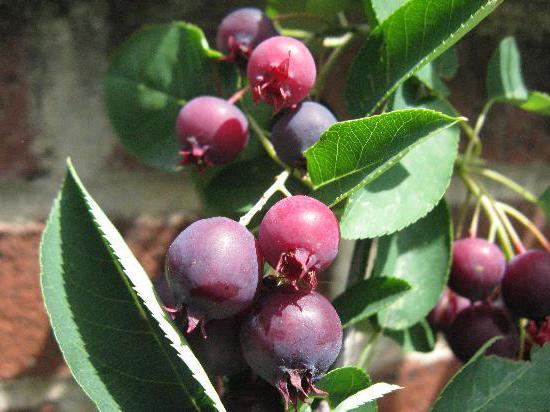

It has a fairly spreading crown and beautiful oval leaves. In spring, irga blooms and forms white inflorescences with long petals. The berries of this species are black with a slightly bluish bloom. The Canadian Irga can reach a height of 6 meters. Large sweet berries grow on it. Very often this variety is used to decorate the site, since the Canadian Irga is very beautiful all year round. The spiky species is a tree up to 5 meters tall, which is often used for the construction of hedges. And finally, the alder irga, which, in comparison with its counterparts, has a small growth, up to 2-4 meters. After the formation of beautiful white inflorescences, juicy black berries appear. A distinctive feature of this species is the ability to grow and produce crops even in the shade.
The benefits of irgi jam
Many housewives who have irga growing on the site use these berries in homemade preparations for the winter. Compotes and jams, jam and jelly are made from it. Tasty and healthy jam is made from irgi. The so-called "five-minute" (jam, which is prepared from 5 to 15 minutes) is especially popular during the period of seasonal illnesses with influenza and ARVI, as it helps to increase immunity.
Prepared from cinnamon and "dry" jam, grinding berries with sugar without boiling. In this case, the benefits of irgi will be even greater, since it will fully retain all its healing properties. It should be remembered that such jam should not be abused for diabetics and hypotensive patients, but with moderate use, this dessert will only benefit, saturating the body with useful vitamins and minerals.
Berry composition
The benefits and harms of irgi are of interest to many gardeners. But first, let's figure out its composition. What good does this berry contain? Firstly, it is a huge amount of trace elements required by the body.
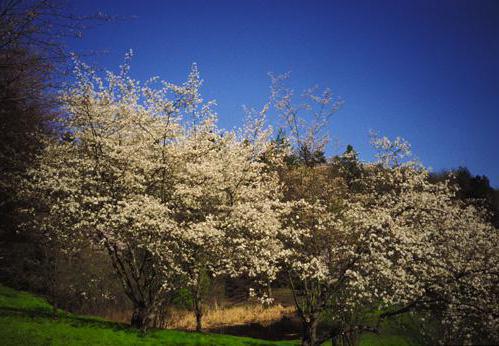

The berry contains copper, iron, cobalt, vitamins B and C, beta-carotene, fiber, pectin, coloring and tannins, anthocyanins, organic acids, flavonols, catechins and many other useful substances. All of them help the body fight many diseases. And since it has antioxidant properties, it is one of the best remedies for cancer prevention.
What is useful berry
Irga berry, the benefits and harms of which should be studied before taking, does not contain proteins and fats. Its calorie content is only 45 kcal. Therefore, its use does not harm the figure and is possible even with a strict diet. Why is irga useful? First, it is one of the best immunity-boosting helpers. Irga treats indigestion and gastritis. Berries and tinctures relieve nervous tension and improve sleep.
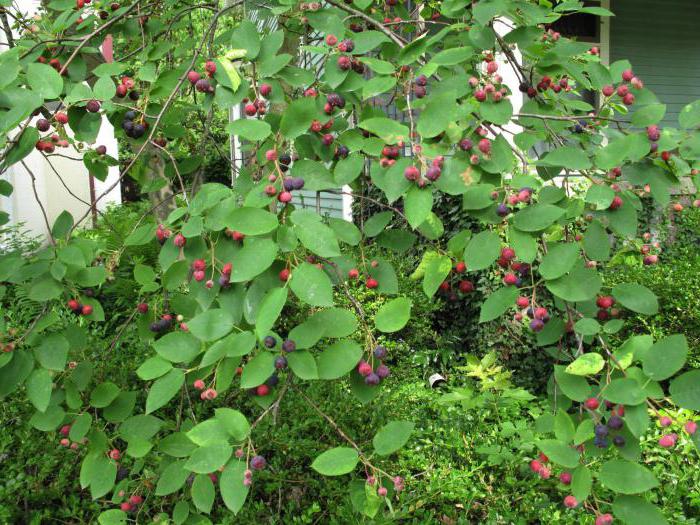

Tinctures also have an anti-inflammatory effect and effectively help with tonsillitis, even purulent. Also, the funds made from the berries and leaves of this plant perfectly heal wounds and stop the blood. Looking at the composition, it is safe to say what effect the berry has. Irga, the benefits and harms, the recipes for which are described in this article, contains carotene, which increases the body's resistance to various infections, thins the blood and improves the condition in case of allergies. An infusion of plant flowers reduces blood pressure and improves the condition of blood vessels.
Pests and diseases
The plant's resistance to many diseases is good. Sometimes a culture can suffer from diseases such as:
Tuberculariosis - you can determine the ailment by the brownish leaves, which gradually begin to fall off. Red bumps appear on the branches.
When the first signs of the disease appear, the affected parts of the plant must be removed immediately. Also treat a bush or tree with copper sulfate or Bordeaux liquid.
Phyllostic spotting - with it, leaves wilting, on which they show brown spots. The affected leaves must be collected and burned, the bush must be treated with Bordeaux liquid.
Gray rot - this disease can be identified by yellowing leaves, they become moldy, fall off. Treatment is carried out with the same Bordeaux liquid.
The most common pest is the irrigated seed-eater. It penetrates the fruit and eats up all the seeds. Treatment of the plant with karbofos will help get rid of pests.
Contraindications
Before using any remedy, you should study it. Irga, vitamins, the benefits and harms of which are described here, are not recommended for people with low blood pressure. It can be consumed, but in moderate doses (a handful of berries). There are no more contraindications, but you must always remember that you need to know when to stop in everything. Eat these medicinal berries for health, carefully studying their composition. Irga, the benefits and harms, photos and recipes of which you will find here, will protect the body from many ailments or help to cope with them.
Harmful properties
Oddly enough, the effect of Karina berry juice on lowering blood pressure is both beneficial and harmful. It is absolutely not recommended to consume the fruits of the plant for hypotonic patients. In such people, the product can cause a feeling of disorientation in space, and the absorption of an abundance of berries often ends in loss of consciousness.
Care should be taken to apply the juice of the fruit of Karina to persons who suffer from reduced blood clotting. Naturally, a handful of berries or a spoonful of jam will do no harm. But it is certainly not worth eating the product in significant quantities for people whose activities are associated with an increased risk of injury.
Sometimes food allergic reactions develop in response to the consumption of Karina berries. They do not flow at lightning speed. Most often, a negative condition is manifested by a sore throat. In rare cases, allergy sufferers experience swelling of the mucous membranes of the respiratory organs.
Pregnant women should use Karina berries with caution. Tannins concentrated in the fruits of the plant can provoke poor digestibility of food. The result can be constipation, other disorders of the gastrointestinal tract. When breastfeeding, such berries are completely prohibited, since they can cause allergic reactions in a child.
It is allowed to add fruits to the menu for diabetics. But only if the berries are used in combination with foods that have a lower glycemic index.
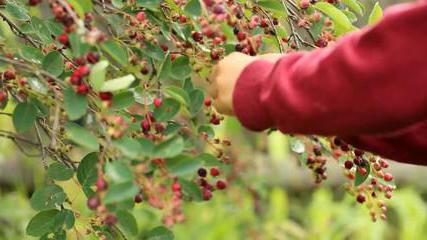

Fruit preparation
Healing infusions can be prepared both from fresh berries and from dried ones. Therefore, harvest the fruits for future use by drying them in the shade. The berry infusion is prepared as follows. Pour one tablespoon of raw materials with a glass of boiling water. Then you need to insist this mixture for 30 minutes, and then drink. This remedy is excellent for stomach and intestinal disorders.
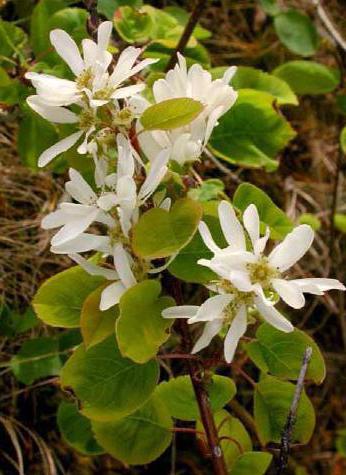

You can pour two large tablespoons of berries in 1.5 cups of cold water, insist for 8 hours, and then bring this mixture to a boil (do not boil). Next, the agent is insisted for another 2 hours. After that, it is taken 100 milliliters twice a day before meals (30 minutes). This infusion improves vision and improves the functioning of the digestive system.
How many irgi berries can you eat?
Some people believe that the more berries you eat, the faster you will get a positive effect. However, this is far from the case: only competent and moderate consumption can bring maximum benefit. The daily norm of irgi is a maximum of 1.5 tbsp. berries.It is not recommended to eat more cinnamon, as its powerful sedative effect can negatively affect, for example, concentration of attention while driving a car or when working on complex mechanisms where special attention and concentration is needed.
Cooking bark, leaves and flowers
What is irga, the benefits and harms, recipes for the preparation of medicinal tinctures - this information is simply necessary for the correct use of the gifts of the plant. After all, you can use not only fruits, but also leaves, bark and flowers. The flower tincture is an excellent remedy for lowering blood pressure and treating heart failure. They are harvested in May, during the flowering period. To prepare a healthy broth, you need to take a handful of dried or fresh flowers and pour 500 milliliters of boiling water over them. We infuse the mixture for about 2 hours and filter. The broth should be taken two large spoons three times a day. The infusion of the leaves is astringent and therefore effective in cases of diarrhea.
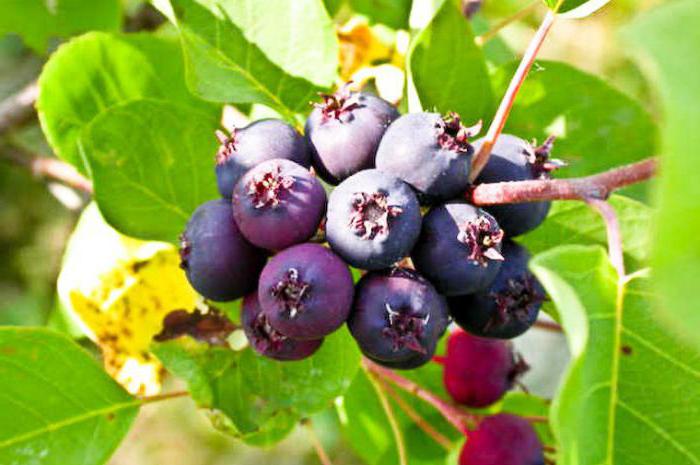

Pour one large spoonful with a glass of boiling water and take the broth half a glass three times a day. A decoction of the bark is good for sore throats, burns and stomach ailments. Pour a small spoonful of chopped bark with a glass of boiling water. We put the mixture on fire and simmer for about 25 minutes. Then we use it for its intended purpose. It is better to harvest the bark in the fall, the leaves and flowers in May, and the berries at the time of ripening. All raw materials must be well dried. Store it in a dry place.
Features of use during pregnancy, breastfeeding and childhood
The presence of cinnamon in the diet of a pregnant and breastfeeding woman will help fill the lack of vitamins, minerals and other substances in her body that help maintain health in a normal state. Herbal medicines can replace medications for sore throats, colds or diarrhea, which are not recommended for taking during the period of gestation.
However, before using berries, you should exclude the presence of contraindications and consult with a specialist. Since the hypotensive effect of the fetus can cause weakness, dizziness and loss of consciousness in a pregnant woman. If there is a tone of the uterus, irgi should be completely abandoned, since the individual substances that make up them can significantly aggravate the problem. Fruits are also not recommended to be consumed before childbirth due to their ability to thin the blood.
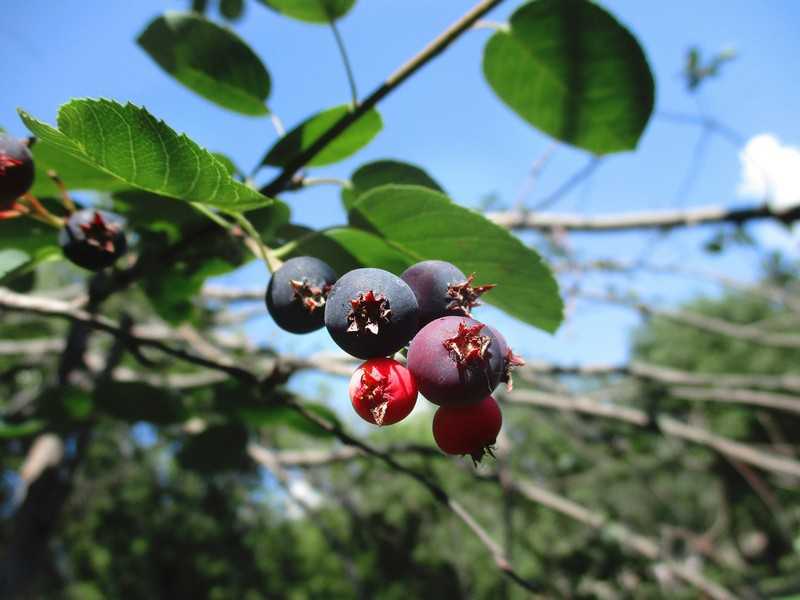

It is necessary to introduce fruits into the diet during lactation gradually, observing the child's reaction to a new food product, since cinnamon is a strong allergen, and can also provoke colic, bloating and constipation in an infant.
Sugar-free compote can be given to children starting from 7 months of age. But fresh fruits are best offered to children over 1 year old. However, it should be borne in mind that the product can cause allergies, therefore, it must be introduced into the children's diet gradually, starting with micro doses.
Breeding irgi
If you were attracted by an irga, the benefits and harms, the photos and recipes of which are presented in the article, then plant it on your site. This unpretentious plant does not require special breeding conditions. It easily tolerates frost, drought and prolonged rains. The only condition for almost all types of irgi is the presence of light and sun. This will provide you with juicy and well-ripened berries. The plant can be propagated by cuttings or grafting. Plant trees 2 meters apart as they grow well. A beautiful and useful hedge can be made of irgi. In the fall, it is necessary to form the crown by pruning. Birds love to feast on these delicious berries and eat them completely on top.
Leaving and pruning irgi
The bush usually does not require special personal care and can grow on its own.Periodically, it should be fed with fertilizer with nitrogen. And in order for the crown of the plant to have an attractive appearance, it must be cut off.
Each bush should have 10 to 20 branches of different ages. All weak shoots are removed.
If irga begins to grow poorly, she needs anti-aging cupping. For this, most of the perennial wood should be removed every few years.

